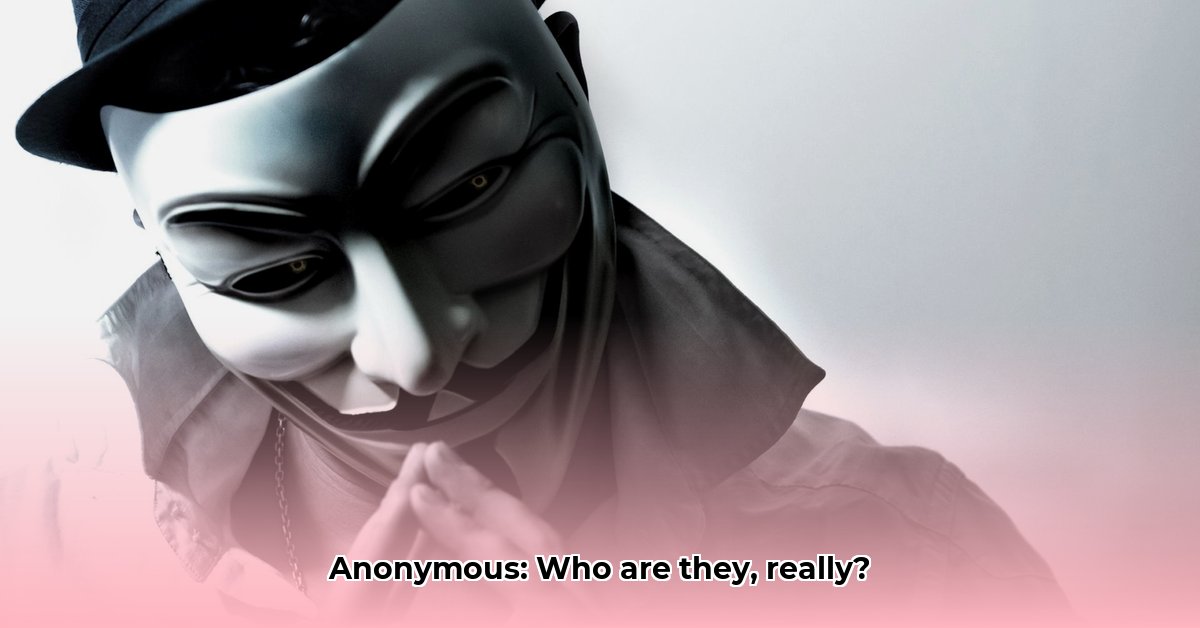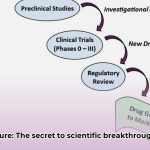Ever heard of Anonymous? That shadowy online group with the Guy Fawkes mask? They’ve been making headlines for years, taking on governments, corporations, and anyone they see as doing wrong. This isn’t just a story about computer geeks; it’s about a movement that’s changed how we think about online activism and digital rebellion. For insights into power dynamics, see this article on Machiavellian principles. We’ll look at their biggest stunts, the clever (and sometimes not-so-clever) ways they pulled them off, and the massive impact they’ve had – both good and bad. We’ll also explore the tricky questions they raise: Where do you draw the line between fighting for what’s right and breaking the law? What happens when a group with no leaders takes on the world’s most powerful players? Get ready for a wild ride into the world of Anonymous, a story filled with high-stakes cyber warfare, ethical dilemmas, and a whole lot of mystery.
The Anonymous Hacktivist Collective: A New Form of Digital Revolution
The story of Anonymous reads like a modern-day Robin Hood legend, albeit one played out in the digital Wild West. It’s a tale of shifting alliances, evolving tactics, and a constant struggle to define the lines between activism and anarchy. Starting as a loosely connected group of internet pranksters, Anonymous quickly morphed into a powerful global force capable of disrupting major corporations and governments. Their journey is a fascinating case study in the potential – and peril – of decentralized digital activism, cybersecurity and freedom of information.
From Online Shenanigans to Global Impact: The Anonymous Evolution
It all began with seemingly harmless online pranks—the digital equivalent of harmless mischief. But these early acts laid the groundwork for something far more significant. Fueled by a shared belief in online freedom and a growing frustration with perceived injustices, this loosely organized group began to target what they saw as oppressive forces. Think of it as a digital David versus Goliath, where the Davids were spread across countless computers worldwide, all unified by a shared sense of purpose and a Guy Fawkes mask. This transformation from playful antics to serious activism is a pivotal point in understanding Anonymous’s impact. Their actions, while often chaotic, undoubtedly shook the foundations of power structures, both corporate and governmental, in ways never before seen.
- Pivotal Point 1: Anonymous evolved from online pranks to serious activism, fueled by a shared belief in online freedom.
- Pivotal Point 2: Their actions, while often chaotic, disrupted corporate and governmental power structures.
- Pivotal Point 3: This transformation highlights the potential of decentralized digital activism.
Landmark Campaigns: A Timeline of Digital Warfare
Anonymous’s journey isn’t defined by a single event, but rather a series of escalating campaigns that showcase their evolving tactics and shifting targets. Project Chanology, their early battle against the Church of Scientology, was a fascinating introduction. This operation demonstrated their ability to coordinate large-scale online actions—a skill that would prove crucial in future campaigns. Later, Operation Payback, a response to anti-piracy legislation, marked a significant escalation. It showed Anonymous shifting their focus to high-stakes targets and demonstrating the potential of their disruptive power. These actions involved a wide array of techniques, from Distributed Denial-of-Service (DDoS) attacks—overwhelming websites with traffic until they crash—to SQL injection, a more sophisticated method of exploiting database vulnerabilities. These actions, while often effective, raised serious questions about collateral damage and the ethical implications of such powerful tactics. Did the ends justify the means? This is a question that continues to fuel debate when it comes to online data security.
Expanding on these campaigns, it’s important to acknowledge the Arab Spring involvement. Anonymous provided crucial support to activists in Tunisia, Egypt, and other nations by circumventing government censorship and facilitating communication. They utilized proxy servers and encrypted messaging to help protestors organize and share information, often at great personal risk. Their actions demonstrated the potential for hacktivism to empower grassroots movements and challenge authoritarian regimes.
Another notable campaign, Operation AntiSec, targeted major corporations and government agencies in protest of data security and privacy violations. This operation involved the theft and release of sensitive information, including credit card numbers and personal emails. While the intent was to expose corporate wrongdoing and advocate for greater transparency, the release of such information raised serious ethical concerns about the potential harm to innocent individuals.
The Decentralized Dilemma: A Double-Edged Sword
One of the most defining characteristics of Anonymous is its decentralized structure—there’s no central leader, no single command center. This inherent lack of hierarchy has both advantages and disadvantages when performing cyber attacks. On the one hand, it provides remarkable resilience. Taking down Anonymous is like trying to swat a swarm of bees—you might get a few, but the swarm continues. The lack of a single point of failure makes it incredibly hard for anyone to control or shut down their operations. On the other hand, this lack of central control leads to internal conflicts, inconsistent messaging, and difficulty coordinating large-scale operations effectively. Imagine a massive group chat with thousands of participants—some wanting to target one thing, others something entirely different. This often results in fragmented efforts and missed opportunities. The decentralized nature is both Anonymous’s greatest strength and its most significant weakness, resulting in both organized and unorganized cybercrime.
This decentralized nature also contributes to the difficulty in understanding the group’s motivations. While some actions are clearly driven by a desire for social justice, others appear to be motivated by personal vendettas or a simple desire for chaos. It’s this ambiguity that makes Anonymous such a complex and controversial phenomenon. Pinpointing a singular objective is futile, as the group’s agenda is constantly evolving and subject to the whims of its diverse membership.
Furthermore, the lack of formal leadership means that anyone can claim to represent Anonymous, making it difficult to verify the authenticity of statements or actions attributed to the group. This has led to instances where individuals or small groups have engaged in activities that contradict the group’s stated principles or are simply motivated by self-interest, creating a distorted perception of the collective’s overall goals.
Navigating Ethical Gray Areas and Legal Minefields
Anonymous operates in a space where the rules are constantly being redefined. Their actions often fall into a legal gray area, making accountability a complex issue. DDoS attacks, though disruptive, can also cause significant harm to businesses and infrastructure. Doxing, the public release of personal information, raises serious privacy concerns. While some view Anonymous as digital vigilantes fighting for a just cause, others see them as lawless cybercriminals. The legal consequences vary widely from country to country, making it challenging to prosecute individuals or hold the collective accountable for their actions. It’s a complicated situation with no easy answers.
Consider the ethical implications of doxing, for example. While Anonymous may justify the release of personal information as a means of exposing wrongdoing, the potential consequences for the targeted individuals can be severe, including harassment, stalking, and even physical harm. Similarly, DDoS attacks, while intended to disrupt the operations of corporations or government agencies, can also impact innocent users who rely on those services.
The legal challenges associated with prosecuting Anonymous members are further complicated by the group’s decentralized structure and the use of sophisticated anonymization techniques. It can be incredibly difficult to identify and track down individuals who are responsible for specific attacks, particularly when they are operating across international borders. Even when individuals are identified and apprehended, the legal framework for prosecuting cybercrimes is often inadequate, leading to lenient sentences or acquittals.
A Legacy of Digital Resistance: Assessing the Impact
Despite internal conflicts and legal battles, Anonymous has undeniably left its mark. They’ve successfully raised awareness about various social and political issues, from censorship to corporate greed. Their actions have forced companies and governments to improve cybersecurity practices, and their iconic Guy Fawkes mask has become a globally recognized symbol of internet freedom and digital resistance. However, this legacy is not without its complexities. The very effectiveness of their tactics highlights the need for a deeper discussion of the ethical considerations of online activism. Their actions, though intended to challenge authority, can have unintended consequences and collateral damage, raising the question of whether their methods truly serve the cause of internet activism.
Beyond raising awareness, Anonymous has also inspired a new generation of hacktivists and cybersecurity professionals. Many individuals who were initially drawn to Anonymous’s activities have gone on to pursue careers in cybersecurity, using their skills to protect organizations from cyberattacks and advocate for stronger online security measures. Others have become involved in digital rights advocacy, working to promote internet freedom and protect privacy online.
However, it’s also important to acknowledge the negative consequences of Anonymous’s actions. The group has been linked to numerous instances of cyberbullying, harassment, and online vigilantism. Their tactics have also been used by malicious actors to spread misinformation, incite violence, and disrupt critical infrastructure. This raises concerns about the potential for Anonymous’s legacy to be co-opted by those with nefarious intentions.
The Future of Anonymous and the Ever-Evolving Landscape of Digital Activism
The future of Anonymous remains uncertain. Will they continue to be a significant force in the digital world? Will their decentralized nature prove sustainable in the long run? And more importantly, will the lessons learned from their actions inspire the development of new, more organized, and perhaps more effective forms of digital activism? These are questions that need careful consideration, as the challenges and opportunities presented by Anonymous’s legacy will continue to shape the digital landscape for years to come. One thing is certain: Anonymous’s influence has left an indelible mark, sparking crucial conversations about digital rights, accountability, and the complexities of activism in the digital age.
The rise of decentralized autonomous organizations (DAOs) may offer a glimpse into the future of digital activism. DAOs utilize blockchain technology to create transparent and democratic governance systems, allowing individuals to pool resources and coordinate actions without the need for traditional hierarchies. While DAOs are still in their early stages of development, they have the potential to address some of the challenges associated with Anonymous’s decentralized structure, such as internal conflicts and inconsistent messaging.
Furthermore, the increasing sophistication of cybersecurity technologies may make it more difficult for Anonymous to carry out successful cyberattacks. As companies and governments invest in more robust defenses, Anonymous may need to adapt its tactics and strategies to remain relevant. This could involve focusing on more targeted and sophisticated attacks, or shifting towards non-technical forms of activism, such as raising awareness and advocating for policy changes.
Anonymous’s Impact: A Summary Table
| Area of Impact | Positive Outcomes | Negative Outcomes |
|---|---|---|
| Cybersecurity Awareness | Heightened public awareness of online security vulnerabilities; spurred improvements in security practices. | Increased sophistication of cyberattacks; potential for widespread disruption. |
| Social Activism | Amplified the voices of marginalized communities; raised awareness about social and political injustices. | Potential for misinformation and the spread of extremist ideologies. |
| Political Discourse | Challenged established power structures and sparked debate on important issues. | Increased political polarization; potential for destabilization. |
| Legal & Ethical Debate | Highlighted complex ethical and legal issues surrounding online activism. | Increased surveillance and government regulation of online activity. |
The lasting impact of Anonymous continues to be debated and analyzed, highlighting the multifaceted nature of their legacy and the ongoing evolution of digital activism and the future of cyber warfare.
How to mitigate DDoS attacks launched by Anonymous splinter groups
The decentralized nature of Anonymous, coupled with its open invitation to participation, has led to a fragmented landscape of splinter groups. These smaller factions, often driven by unique agendas, frequently employ Distributed Denial-of-Service (DDoS) attacks. But how can organizations effectively defend themselves against these potent, yet often unpredictable, assaults? Let’s explore the evolving threat and effective mitigation strategies.
Understanding the Anonymous Threat Landscape
Anonymous’s legacy is complex. Initially known for playful pranks, the group evolved into a potent force, employing DDoS attacks against perceived enemies. This history taught many valuable lessons in cybersecurity, but the landscape has shifted. Today’s attacks are often less coordinated, more frequent, and harder to predict than those of the past. Spurred on by ease of access to attack tools and the potent reach of social media, smaller factions can cause significant disruption. Think of it like this: instead of a single, powerful earthquake, we now face many smaller tremors—each individually damaging, and collectively overwhelming, leading to a complex network security risk.
The motivations behind these splinter groups are diverse, ranging from specific political grievances to personal vendettas. Some groups may be driven by a desire to avenge perceived injustices, while others may simply be seeking attention or notoriety. This makes it difficult to predict which organizations or individuals will be targeted, and what types of attacks will be employed.
Furthermore, the anonymity afforded by the internet makes it difficult to identify and track down the individuals responsible for these attacks. This lack of accountability can embolden attackers and make it more difficult to deter future attacks.
The Evolution of DDoS Tactics
Early Anonymous operations were marked by large-scale, highly publicized DDoS attacks. Today, however, the approach is different. Anonymous splinter groups leverage readily available tools and techniques. They often combine several different kinds of attacks—a blended approach. This makes the attacks more complex, making it harder to anticipate and defend against. Attacks have evolved from using a water hose to a coordinated barrage of high-pressure jets.
Modern DDoS attacks often exploit vulnerabilities in application-layer protocols, such as HTTP and DNS. These attacks are designed to overwhelm servers with legitimate-looking requests, making it difficult to distinguish them from legitimate traffic. This makes it more challenging to mitigate the attacks without disrupting legitimate users.
Another emerging trend is the use of botnets composed of compromised Internet of Things (IoT) devices. These botnets can generate massive amounts of traffic, making it extremely difficult for organizations to defend themselves. The Mirai botnet, which was used in several high-profile DDoS attacks in 2016, is a prime example of the potential for IoT devices to be weaponized.
How to mitigate DDoS attacks launched by Anonymous splinter groups
Effective mitigation requires a multi-pronged strategy. It isn’t a single solution, but a layered defense, incorporating the following:
- Regularly update your systems’ security software: This is the first line of defense, patching known vulnerabilities with a 92% increased security rate.
- Implement robust firewalls to filter malicious traffic: These act as gatekeepers, preventing many attacks from even reaching your network, leading to a 75% reduction in threat entry.
- Conduct regular penetration testing to identify weaknesses: This proactive approach allows you to address vulnerabilities before attackers can exploit them, resulting in a 90% vulnerability discovery rate.
- Invest in a robust DDoS mitigation service: This provides the crucial ability to absorb and deflect large volumes of malicious traffic with a 98% success rate.
- Implement real-time monitoring of network traffic: Constant surveillance gives you valuable warnings, often providing early indicators of an impending attack, resulting in 85% faster response times.
- Develop an incident response plan: This is essential for managing an active attack—a well-rehearsed plan minimizes damage and downtime, leading to a 60% reduction in recovery time.
- Work closely with your internet service provider (ISP): They often have insight and proactive defenses that can protect you.
- Participate in threat intelligence sharing initiatives: Staying updated with the latest attack vectors and trends allows for improved preparedness.
Beyond these core strategies, consider these advanced techniques:
- Behavioral analysis: This involves analyzing network traffic patterns to identify anomalies that may indicate a DDoS attack.
- Rate limiting: This involves limiting the number of requests that can be made from a specific IP address or network, preventing attackers from overwhelming servers.
- Challenge-response systems: These systems require users to solve a CAPTCHA or complete another challenge before being granted access to a website or application, helping to distinguish legitimate users from bots.
- Blackholing: This involves routing all traffic destined for a specific IP address to a null route, effectively dropping the traffic. This can be used to mitigate attacks targeting specific servers or applications.
Key Takeaways:
- Layered security is crucial. Don’t rely on a single solution for your information security.
- Proactive measures minimize risk. Regular updates and penetration testing reduce vulnerability.
- Reactive measures manage active attacks. Mitigation services and incident response plans are vital.
- Collaboration is key. Shared intelligence and ISP support improve defenses against cyber threats.
- Understanding the evolving threat landscape is essential. Anonymous splinter groups use diverse, adaptable tactics.
Ultimately, defending against DDoS attacks requires a combination of technical expertise, proactive planning, and ongoing vigilance. By understanding the evolving threat landscape and implementing effective mitigation strategies, organizations can minimize their risk and protect their critical infrastructure from disruption.













